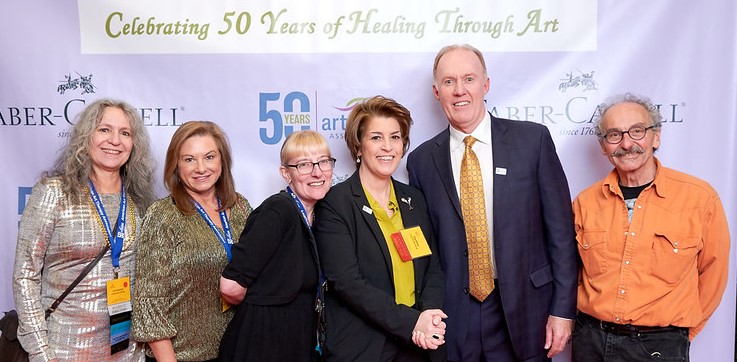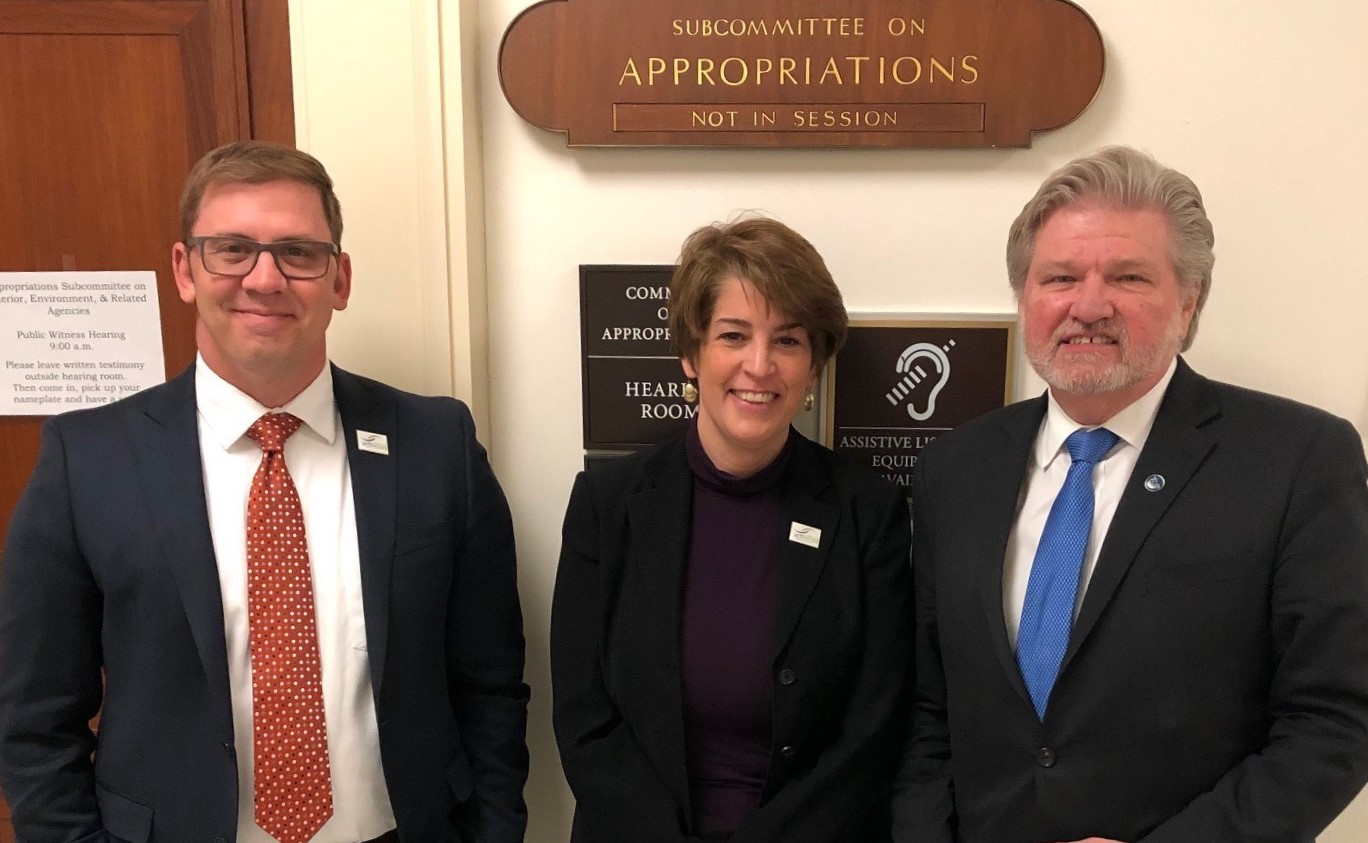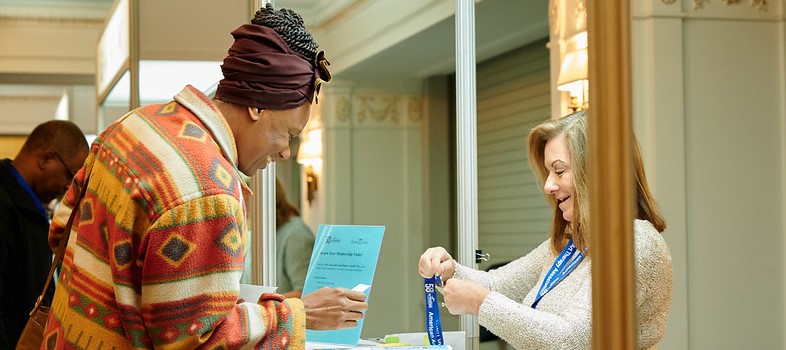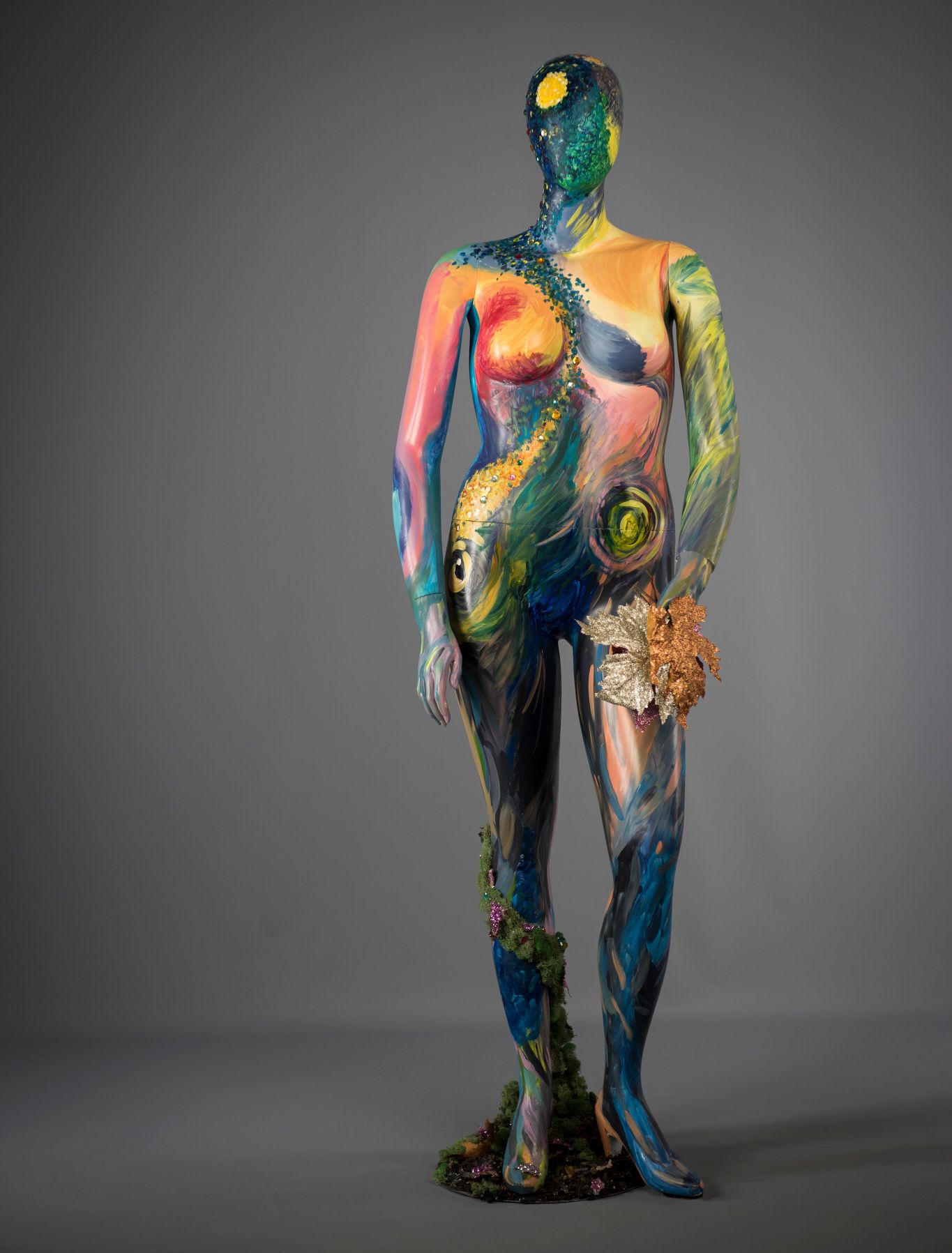2019 has been a big year for art therapy. The American Art Therapy Association summarized the accomplishments in the field this year.





As we prepare to head into the next decade, we’d like to take this opportunity to take stock and reflect on what we have accomplished collectively as a profession in this 50th year of our association’s life. We’ve made remarkable gains in legislative goals and public awareness for the profession as well as significant improvements and expansions in membership experience and programmatic offerings.
Let’s look back together at the accomplishments of the past year!
Collaborations & Public Awareness

Faber-Castell USA CEO Jamie Gallagher (second from right) attended AATA’s 50th red carpet celebration during the 2019 conference in Kansas City. From left: then AATA President Dr. Christianne Strang, Director of Events and Education Barbara Florence, Board Member Gretchen Miller, and Executive Director Cynthia Woodruff, and Faber-Castell USA Artist Franz Spohn.
As the nation’s leading voice for art therapy, we work to educate lawmakers and the public on the power of art therapy.
- We celebrated our 50th Anniversary Year with a year-long campaign to celebrate the history and look to the future of our profession. Read the wrap-up here and check out our 55th collaborative video!
- This year we continued to foster partnerships with shared goals in public awareness and fundraising. The AATA started relationships with Faber-Castell USA (check out their webpage and AATA member Carol Olson’s blog post “Art Therapy 101: Sorting Facts from Myths”). You may have even met the CEO Jamie Gallagher at conference in Kansas City! Also in 2019, the AATA joined National Parks Service’s Healthy Parks Healthy People initiative. We hosted the webinar “Bringing Art Therapy into the National Parks” with over thirty national parks in attendance. The AATA is now working with NPS on pilot art therapy programs following the positive response to this webinar.
- We are always looking for creative new ways to spread awareness about the field. In March we released our very first Ask Me Anything featuring Cheryl Doby-Copeland.
- We love highlighting the life-enhancing work our members do every day through our Featured Member series! This year the Journal of Pain & Systems Management will expand awareness of this work by sharing artwork by 12 of AATA’s 2019 Featured Members as the cover art for each journal issue in 2020.
- The AATA continues to issue regular content through our Blog, News, and newsletter, Art Therapy Today as well as our social media platforms. Follow us on Facebook, Twitter, and Instagram!
State Legislative Victories & Accreditation Milestones

Art therapists in Connecticut testify before the Joint Committee on Public Health on February 11, 2019.
This year we worked with our local advocates and volunteers to introduce more art therapy legislation than ever before and took a more active role advocating at the federal level for access to mental health care and the arts.
- The increased momentum in our licensure success continues! This momentum builds on the dedicated work of so many throughout the AATA’s history. In an October blog post, “5 Building Blocks to Achieving Art Therapy Licensure in All 50 States,” we review some of the milestones that made our licensure strategy possible today and outline our approach to licensure in detail.
- It’s hard to keep up with all the action in the states, so we’ve made it easy by creating a Legislative News category on our News page where you can scroll through the updates. Here are the key legislative events from 2019:
- This year art therapists in Connecticut achieved independent licensure! The Clinical Licensed Art Therapist (CLAT) is already being issued by the Connecticut Department of Public Health.
- Bills making legislative fixes to education requirements in existing art therapy licenses were enacted in Maryland and Oregon.
- Art therapy legislation was introduced in 14 states during the 2019 legislative sessions, including eight bills for independent art therapy licensure (CT, DC, IA, MA, NH, PA, TN, and OH).
- Our momentum in obtaining external accreditation also continues to grow. The first 12 art therapy graduate programs have received initial accreditation through the Commission on Accreditation of Allied Health Education Programs (CAAHEP). Ten of the programs received accreditation in 2019, and we look forward to announcing more in 2020. The transition from approval through the AATA’s Educational Programs Approval Board (EPAB) to accreditation through CAAHEP has been years in the making, and it’s great to see these results! In addition to further professionalizing art therapy programs, the availability of third party accreditation has prompted several institutions to create graduate programs in art therapy, expanding access to education in the field.
Strides in Federal Advocacy

Christopher Stowe, Master Gunnery Sergeant, USMC (ret.); Cynthia Woodruff, AATA Executive Director; and Americans for the Arts President and CEO Robert Lynch.
While our top priorities, licensure and reimbursement for art therapists, occur at the state level where we focus our legislative efforts, we also stay apprised of federal mental health and arts issues. We advocate with our collaborators and coalitions for improved mental health and arts policies.
- In February of this year, Christopher Stowe Master Gunnery Sergeant, USMC (ret.) testified on behalf of the AATA alongside Americans for the Arts CEO Robert Lynch before the House Interior Appropriations Subcommittee. Mr. Stowe spoke of his life-changing experience with art therapy through the Creative Forces program at the National Intrepid Center of Excellence (NICoE) at Walter Reed and urged the Subcommittee to increase funding for the National Endowment for the Arts (NEA) by $12.5 to $167.5 for FY 2020. We’re pleased to announce that on December 17th the House of Representatives passed their FY 2020 funding bills which included funding the NEA at $162.25 million, a $7.25 million increase, the largest amount in a decade! Also included was $5 million in direct appropriation to the Veteran Affairs Department for creative arts therapies to treat veterans through their Whole Health initiative.
- We continue to work with coalitions and collaborating organizations to advocate for access to quality mental health care and the arts. This year for the first time ever the, AATA joined the National Council for Behavioral Health and over 600 advocates for Behavioral Health Hill Day 2019 to advocate for legislation to improve our nation’s mental health care. Once again, we took a stand for the arts by participating in Americans for the Arts’ Arts Advocacy Day, taking an active role in drafting the briefs and training advocates in the policy agenda around arts in health and arts in the military. With our colleagues in the National Coalition of Creative Arts Therapies Associations (NCCATA), we worked to spread awareness during Creative Arts Therapies Week in March and issued joint letters in support of two insurance bills in New York that would have expanded coverage for licensed creative arts therapists (LCAT) in the state.
- Recognizing the importance of access to mental health care in the 2020 elections dialogue, the AATA joined the Mental Health for US, a nonpartisan educational initiative focused on elevating mental health and addiction in national policy conversations by empowering grassroots advocates and improving candidate and policymaker health literacy, as a coalition member.
- Through our coalitions such as the Mental Health Liaison Group and the National Alliance of Specialized Instructional Support Personnel (NASISP), the AATA signed onto over 20 joint letters to lawmakers in support of improved federal mental health policy.
New Professional Development Opportunities

Attendees at the Inaugural International Art Therapy Practice/Research Conference in London
The AATA is committed to continue providing your favorite programs and features while also expanding with new experiences and responding to your needs.
- On December 7th, the AATA offered our very first virtual conference! With over 40 attendees, 13 presenters, and seven sessions, this new virtual format paves the way for even more online educational offerings that bring the content to you.
- The AATA’s 50th Conference in Kansas City was a success! Almost 1000 attendees enjoyed learning through over 230 education sessions and many more opportunities for networking and exploring the depths of the field. We were pleased to host U.S. Representative Sharice Davids (KS-3), a champion for mental health, and Kansas State Representative Jerry Stogsdill (District 21), sponsor of the Kansas art therapy licensure bill, at conference!
- In July of 2019, the AATA teamed up with the British Association of Art Therapists to offer the Inaugural International Art Therapy Practice/Research Conference that gathered over 700 attendees from more than 35 countries in London.
- We are continuing to expand our course offerings on the AATA’s Institute for Continuing Education in Art Therapy (ICE/AT).
- Beginning in December, we are also launching a brand new online platform, compatible with members’ MyAATA login, to further streamline your online experience with the AATA and to make accessing these continuing education courses a more user-friendly experience.
Enhanced Membership Experience

This year we have continued our work to make sure every member’s experience with the AATA, whether in-person or online, is a positive one.
- Our MyAATA online community forum passed the 1,000 posts milestone! Members have discussed a wide range of topics within the art therapy field and participated in hosted series such as the Journal Chat, that provides an opportunity to dialogue with authors who had articles that were published in 2019 issues. It has been truly rewarding to see this community grow and to witness art therapists lifting each other up in real-time, exchanging best practices and words of encouragement.
- We’ve welcomed Anita Douglas, Senior Manager of Membership to our National Office team this year and she has been hard at work in improving membership experience, renewal, and retention.






